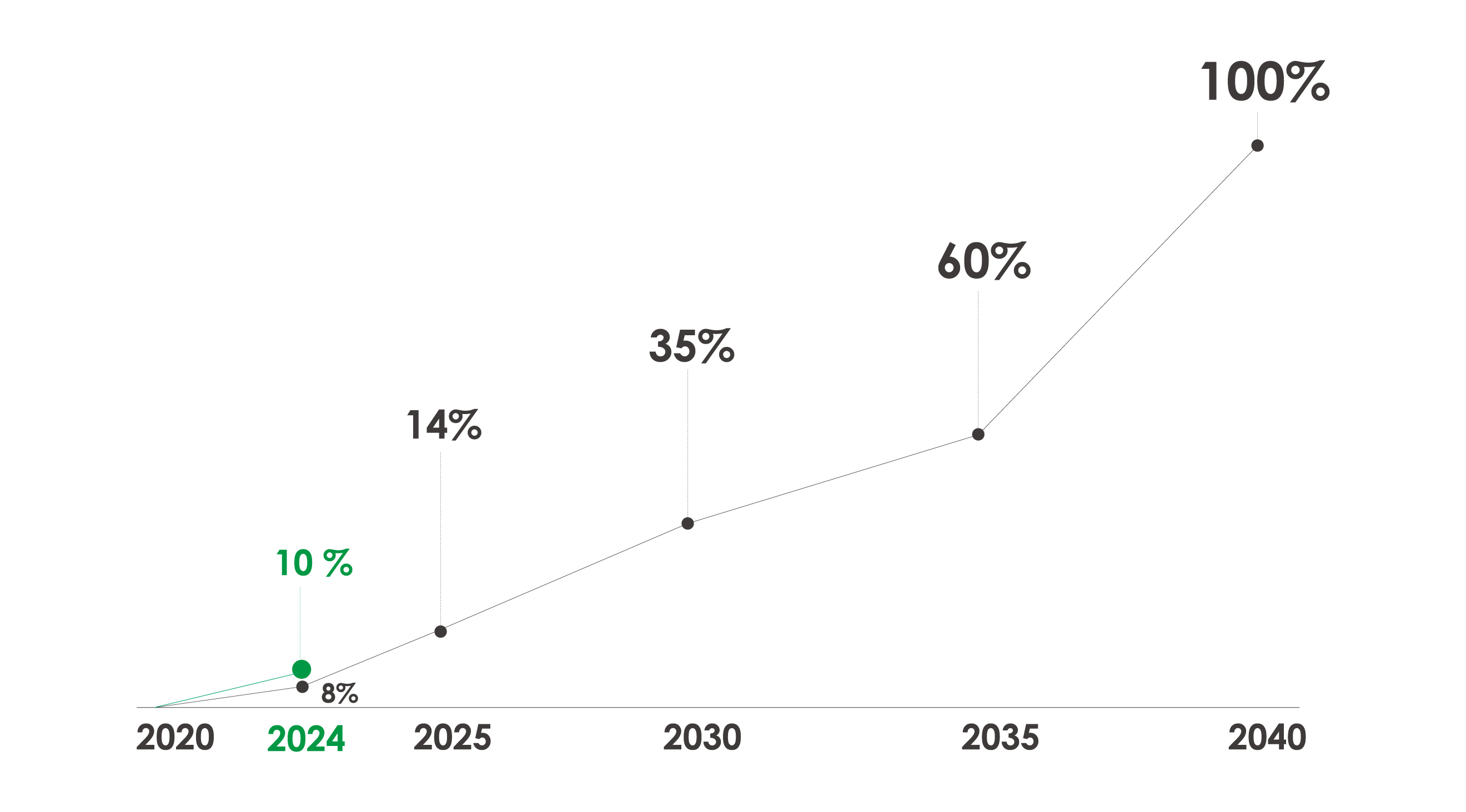
- About Us
- Investor Relations
- ESG
- Product & Service
- Customer Service
Customer Service
- Visiting Taiwan

Climate change is an issue of common concern to all mankind. TWM will continue to work towards the goal of controlling temperature rise within 1.5 degrees Celsius, developing climate strategies and moving towards net zero emissions, participating in relevant unions/associations, and advocating organizations in order to comply with the global climate accord of the ‘Paris Agreement’. TWM will minimize the footprint of the company and its value chain using the latest IoT and AI technologies, not only reduce the environmental impact but also create a more comfortable and beautiful ecosystem.
The target of energy-saving was to reduce power consumption by 4.65 MWh and the actual amount saved was 14.01 MWh.
Track energy consumption progress through management system, including vehicle monitoring system and energy management(ISO 50001).
There are 2 sources of our green energy:
In 2024, Our Kaohsiung Qianzhen server room Introduced AI energy-saving solution, to use big data analysis of IT devices loading and cooling load to dynamically adjust the load of chiller and water pumps, reduce about 19.3 MWH power consumption.
Because of the good energy saving efficiency, in the future plans we will introduce step by step to applicable server rooms.
TWM announces Environmental and Energy Policy, as well as relevant environmental regulations, on a regular basis every year. Employees are encouraged to actively participate in energy-saving and carbon-reduction efforts to contribute to the planet. Energy efficiency training is provided on the intranet. Additionally, monthly statistics on office water and electricity consumption, waste generation, and printer usage are shared to promote various energy-saving measures. This initiative aims to raise employees' awareness of energy consumption reduction, encouraging them to start with water conservation, electricity savings, and plastic reduction.
| Total energy consumption | Unit | FY 2021 | FY 2022 | FY 2023 | FY 2024 | target for FY 2024 |
|---|---|---|---|---|---|---|
| Total non- renewable energy consumption | MWh | 544,735.82 | 560,567.98 | 569,865.52 | 697,590.19 | 496,101.9 |
| Total renewable energy consumption | MWh | 7,618.39 | 26,136.93 | 36,530.63 | 7,848.73 | |
| Data coverage (as % of denominator) | percentage of: Revenue | 100 | 100 | 100 | 100 |
| Items | FY 2021 | FY 2022 | FY 2023 | FY 2024 |
|---|---|---|---|---|
| Gasoline (L) | 902,299.26 | 632,244.84 | 608,340.39 | 691,812.32 |
| Avg. price (NTD/L) | 28.95 | 31.31 | 31.24 | 30.86 |
| Diesel (L) | 43,474.67 | 52,555.50 | 30,086.67 | 55,391.01 |
| Avg. price (NTD/L) | 24.68 | 27.36 | 27.65 | 27.16 |
| Natural gas (m33) | - | 52 | 175 | 46 |
| Avg. price (NTD/m3) | - | 10.38 | 10.38 | 10.38 |
| Electricity (KWh) | 536,104,661.12 | 554,303,746.41 | 564,036,732.41 | 690,746,286.42 |
| Avg. price (NTD/KWh) | 3.30 | 3.60 | 3.60 | 3.60 |
| Total costs of energy consumption (NTD) | $1,796,339,900 | $2,016,727,531 | $2,050,370,503 | $2,509,538,551 |
| Items | FY 2021 | FY 2022 | FY 2023 | FY 2024 |
|---|---|---|---|---|
| green electricity purchased (MWh) | 7,253.59 | 25,564.93 | 36,002.63 | 78,228.73 |
| Solar power from TWM generators (MWH) | 364.81 | 486.00 | 366.00 | 256 |
| Wind power from TWM generators (MWH) | - | - | - | - |
| T-REC (MWH) | - | 86.00 | 162.00 | 107.00 |
| I-REC (MWH) | - | - | - | - |
| total renewable energy purchased or generated (MWH) | 7,618.39 | 26,136.93 | 36,530.63 | 78,591.73 |

| Average PUE | FY 2021 | FY 2022 | FY 2023 | FY 2024 | target for FY 2024 | |
|---|---|---|---|---|---|---|
| Average PUE | 1.67 | 1.65 | 1.63 | 1.63 | 1.64 | |
| Coverage (% of total ICT population) | ICT population defined as: Percentage of data center energy input |
100% | 100% | 100% | 100% |
| Data Center Energy Usage | FY 2021 | FY 2022 | FY 2023 | FY 2024 | renewable energy target for FY 2024 |
|---|---|---|---|---|---|
| Total energy used in data centers (MWh) | 32,675 | 37,825 | 37,471 | 38,356 | 38,618 |
| Percentage of renewable energy (of total energy) |
23.32 | 68.87 | 97.5 | 100 | 35 |